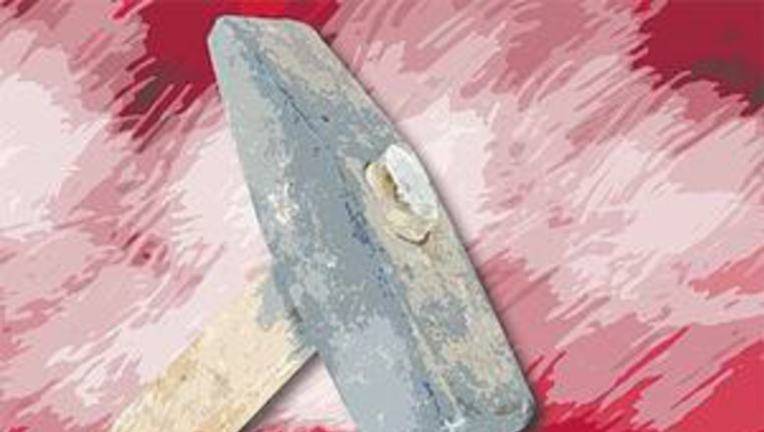
Decades before blood-curdling suicide bombings and ‘target killings’ became an uneasy routine in Pakistan’s largest city, Karachi, a wave of terror swept across the sprawling and chaotic metropolis, instilling nearly the same sense of fear and dread as the city’s ruthless criminal craziness today.
Though Karachi was never a tranquil city, its crime rates were less than half of what they are today during the mid and late 1980s.
Between 1985 and 1987, an unexplained occurrence involving a claimed group of terrorists randomly bludgeoning homeless persons with a hefty hammer was at least one indicator of the city’s crime graph abruptly turning upward, a trajectory that would continue to slither upward through the late 1980s.

One of the most frequently cited explanations for the rapid spike in crime (and political violence) in Karachi in the mid-1980s is the explosion of ethnic tensions and violence between the city’s Mohajir (Urdu-speaking) majority and the majority Pashtun group.
The massive flood of Afghan refugees into Karachi during the height of the Afghan Civil War strained the city’s economic resources, triggering ethnic tensions and fractures. As a result, the city of lights has a bloody and gory history.

There were also underground clusters and mafias among the Afghan refugees trading in guns and drugs. These quickly inundated Karachi. For instance, until 1979, Karachi had only two documented cases of heroin addiction (both hospitalized to the city’s Jinnah Hospital). By 1986, however, Pakistan had surpassed the United States as the country with the second biggest population of heroin users, with Karachi having the highest concentration.
General Ziaul Haq’s dictatorship, which had been in power since July 1977, initially lacked knowledge (and perhaps even interest) in how to contain this unexpected outbreak of ethnic violence, growing crime, and drug addiction in Karachi.
The so-called ‘Hathora Group’ arose amid ethnic strife and rioting and increased muggings, robberies, drug dealing, land-grabbing, and financial frauds.
Newspaper reporters coined the term was coined by newspaper reporters investigating the initial wave of murders committed by mystery men wielding hammers.
In 1985, Karachi police became concerned about an increasing number of murders perpetrated similarly. Though the killings occurred in various parts of the city, they all involved street urchins and beggars slain by a single severe blow to the skull with a hammer.
When the overall number of similar murders reached seven in late 1985, authorities hypothesized that the crimes were committed by a single individual (a serial killer).
After a victim survived the hit, the single-person theory morphed into a suspected group of murders. For example, a beggar sleeping on a footpath on Karachi’s Burns Road stated that he fell asleep around 2 a.m. but was awoken by the screeching sound of an automobile.
He stated that before he could fully awaken, he noticed at least four individuals dressed in white and wearing black masks approaching him. One of them struck him in the skull with a hefty hammer, and he collapsed, almost dying of blood loss.
When publications publicized the beggar’s narrative, the police and press began to refer to the alleged group as the ‘Hathora Group.’
The killings ceased for a time but returned in mid-1986 to terrify people who spent their nights on the ‘City of Lights’ walkways.
Several years later, a sociologist stated that the city’s quick outbreak of ethnic violence and surge in crime drove Karachi spiraling into unexpected turmoil that may readily be utilized for different unscrupulous criminal and political ends.
He believed the killings were premeditated to sow panic in a community that had grown bewildered due to the rapid growth of political violence and criminality. However, who planned this?
According to certain Urdu publications, the gang was composed of operatives of the Soviet intelligence agency, the KGB, and Afghan agents (KHAD), who were retaliating against Pakistan’s logistical and political assistance for Afghan insurgents battling the Soviet-backed regime in Kabul.
According to some scribes, the authoritarian Zia government orchestrated the mystery deaths to sow terror and divert media attention away from Karachi’s ethnic strife and soaring crime rates.
One English journal even speculated that the gang might comprise members of a satanic cult. It discussed how certain groups based in Karachi had grown highly wealthy overnight (by importing drugs into the United States and Europe) and had formed secret clubs.’
The reporter once witnessed one such group engaging in ‘strange rites’ while clothed in long white cloaks on an isolated beach in Karachi in the ‘middle of the night.’ However, he did not specify whether they were also carrying hammers.
Another article described the Hathora Group as a ‘killing squad’ designed to eradicate drug addicts, beggars, runaway children, and homeless men. However, the newspaper did not mention who it believed created such a squad.
For nearly two years, Karachi was in awe of the occurrence and scared of tales that the group was now plotting to break into people’s houses with their killing hammers. However, that was never the case.
The group’s last known instance was reported in May 1986. There were never any arrests made. The Hathora group’s enigma remains unresolved to this day.
